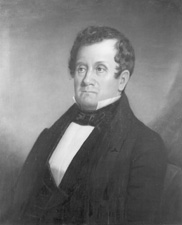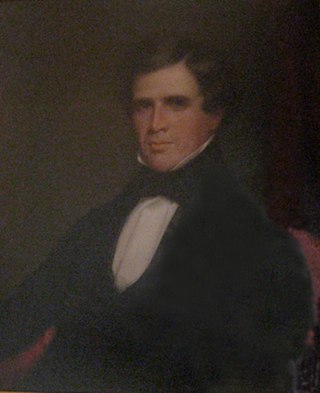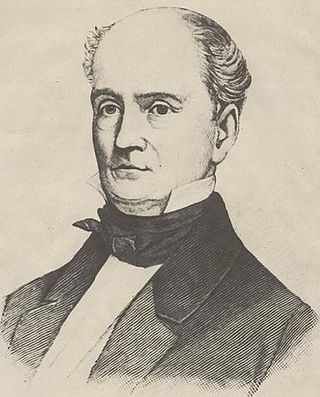
John Mattocks was an American Whig politician, a brigadier general in the War of 1812, U.S. Representative, and 16th governor of Vermont.

United States gubernatorial elections were held in 1800, in 11 states, concurrent with the House, Senate elections and presidential election.

The 1852 Vermont gubernatorial election was held on Tuesday, September 7. Incumbent governor Charles K. Williams, a Whig, was not a candidate for reelection. In the voting, Whig Erastus Fairbanks received 49.2 percent, Democrat John S. Robinson 31.3 percent, and Free Soil Party nominee Lawrence Brainerd 19.6 percent.

The 1842 Massachusetts gubernatorial election consisted of an initial popular election held on November 14, 1842 that was followed by a legislative vote held on January 17, 1843. The ultimate task of electing the governor had been placed before the Massachusetts General Court because no candidate received the majority of the vote that was constitutionally required for a candidate to be elected through the popular election. Incumbent Whig Governor John Davis was defeated by Democratic nominee and former Governor Marcus Morton.

The 1843–44 Massachusetts gubernatorial election consisted of an initial popular election held on November 13, 1843, that was followed by a legislative vote held on January 8, 1844. The ultimate task of electing the governor had been placed before the Massachusetts General Court because no candidate received the majority of the vote that was constitutionally required for a candidate to be elected through the popular election. Incumbent Democratic Governor Marcus Morton was defeated by Whig Party nominee George N. Briggs.

The 1862 New Hampshire gubernatorial election was held on March 11, 1862.

The 1857 New Hampshire gubernatorial election was held on March 10, 1857.

The 1839 New Hampshire gubernatorial election was held on March 12, 1839.

The 1841 New Hampshire gubernatorial election was held on March 9, 1841.

The 1842 New Hampshire gubernatorial election was held on March 8, 1842.

The 1835 Vermont gubernatorial election was held on September 1, 1835.

The 1836 Vermont gubernatorial election was held on September 6, 1836.

The 1837 Vermont gubernatorial election was held on September 5, 1837.

The 1838 Vermont gubernatorial election was held on September 4, 1838.

The 1840 Vermont gubernatorial election was held on September 1, 1840. Incumbent Whig Governor Silas H. Jennison defeated Democratic nominee Paul Dillingham with 59.58% of the vote.

The 1841 Vermont gubernatorial election was held on September 7, 1841.

The 1842 Vermont gubernatorial election was held on September 6, 1842.

The 1844 Vermont gubernatorial election was held on September 3, 1844.

The 1845 Vermont gubernatorial election was held on September 2, 1845.

The 1845–46 Massachusetts gubernatorial election consisted of an initial popular election held on November 10, 1845 that was followed by a legislative vote held on January 12, 1846. The ultimate task of electing the governor had been placed before the Massachusetts General Court because no candidate received the majority of the vote required for a candidate to be elected through the popular election. Incumbent Whig Governor George N. Briggs defeated Democratic nominee Isaac Davis, Liberty Party nominee Samuel E. Sewall and Know Nothing nominee Henry Shaw.





















